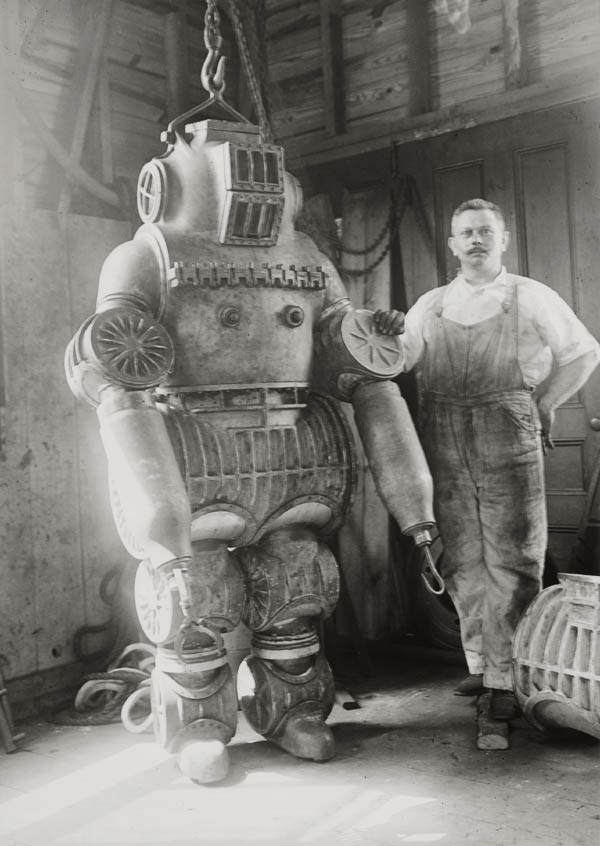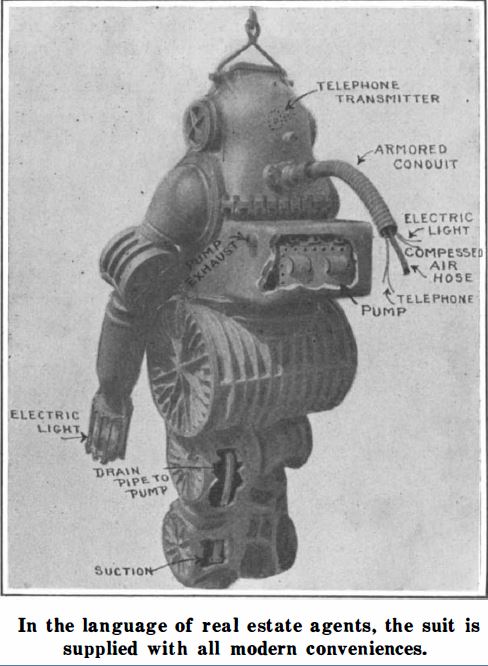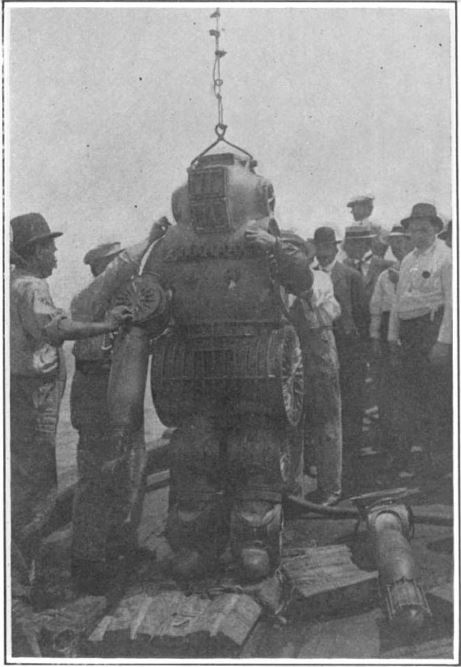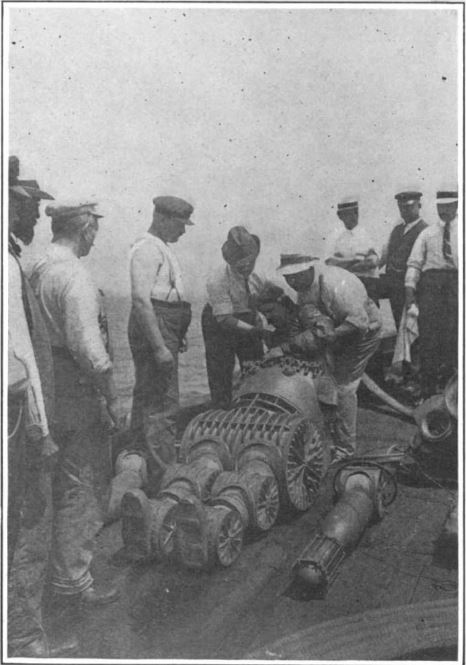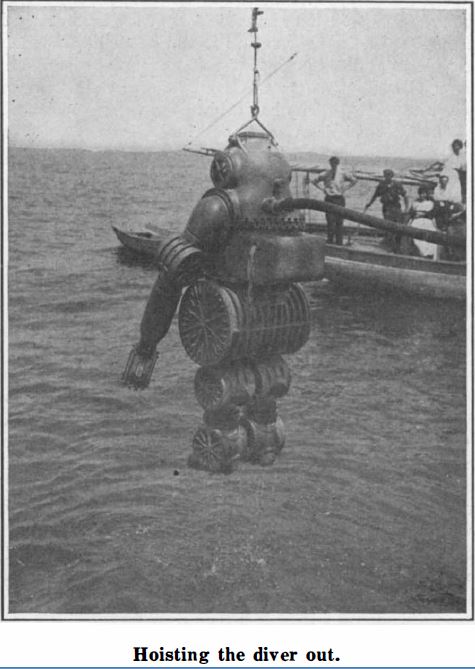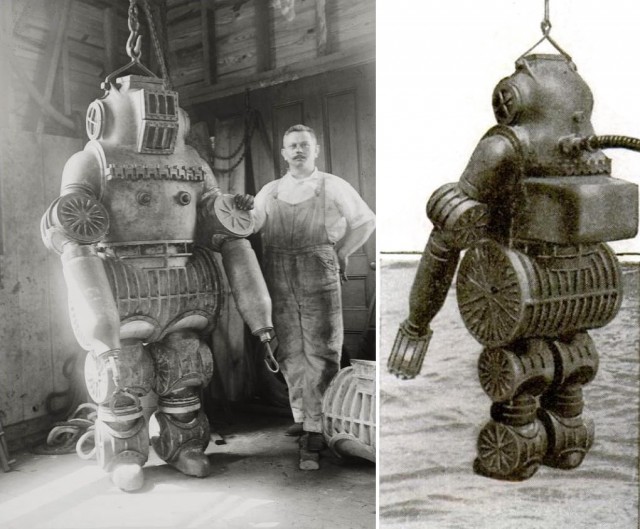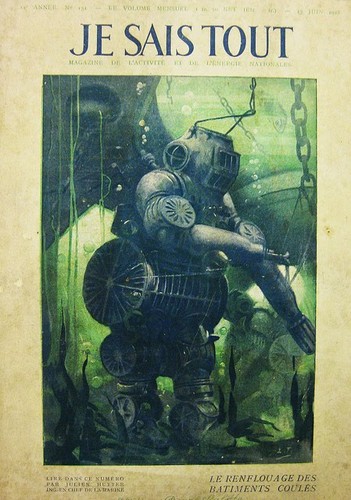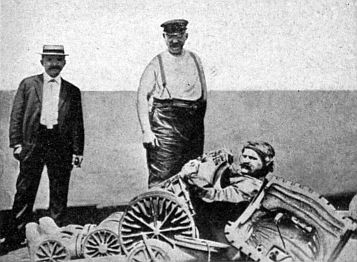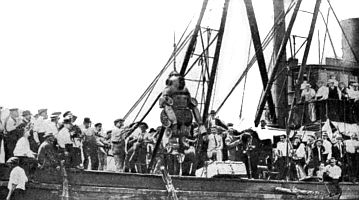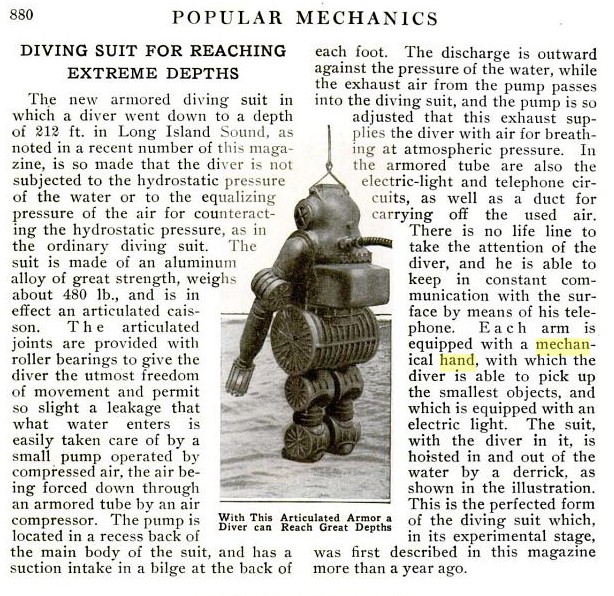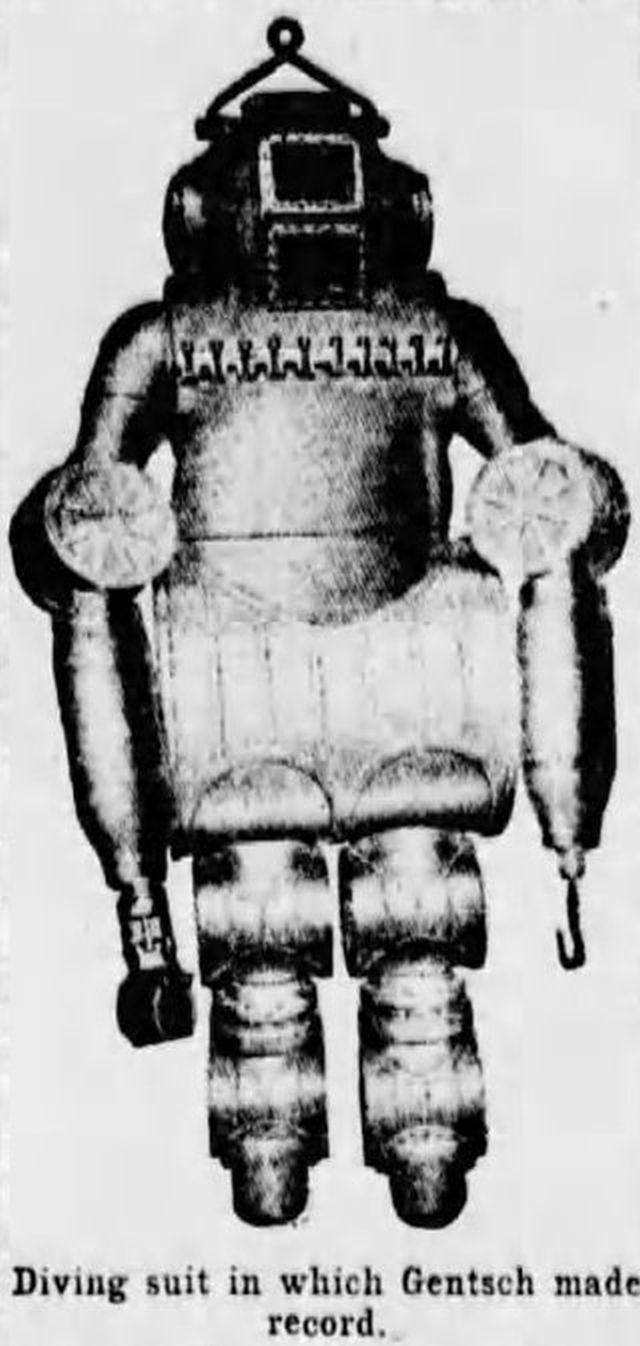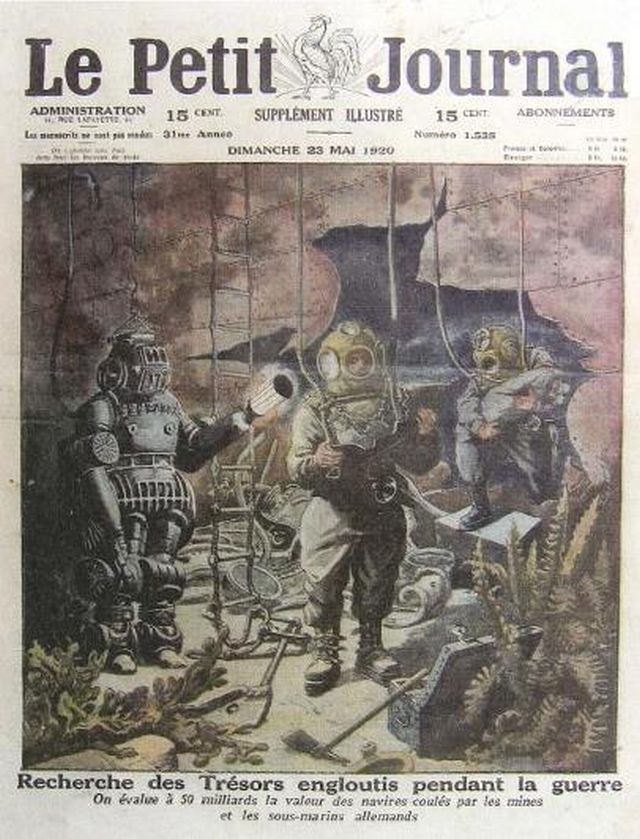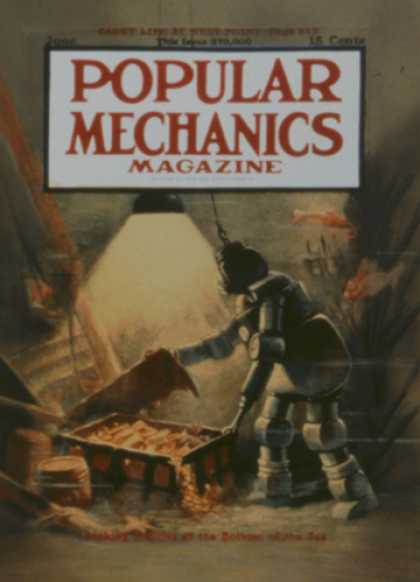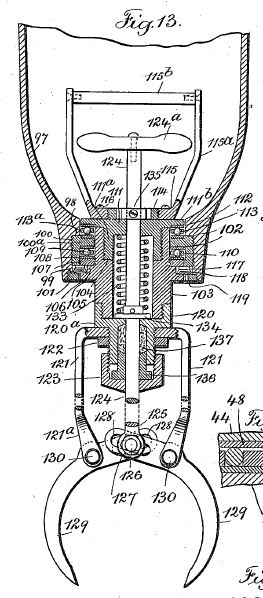1910 – Submarine Armor by Chester E. Macduffee.
In Popular Mechanics Magazine, November 1914 it was reported that the new armored diving suit went down to a depth of 212 ft. in Long Island Sound, establishing a new American record for deep-sea diving.
Above images: Scientific American, 22 August, 1914.
The left hand is an electric lamp, in this photo.
Source: Popular Mechanics, December 1914.
Most early armour's joints tightened up or seized the deeper the suit went. At these depths, suits were relegated as observation posts mainly, as they had telephone connection to the surface.
Here we see the suit relegated to this role, as well as a work lamp as a hand attachment. Conventional suits in use being more flexible at shallower depths as well.
Below: The article Popular Mechanics above mentions re experimental stage.
Source: Popular Mechanics, June 1913.
1910 – Submarine Armor – Chester E. Macduffee
Publication number US989530 A
Publication type Grant
Publication date Apr 11, 1911
Filing date Dec 6, 1910
Priority date Dec 6, 1910
Inventors Chester E Macduffee
Original Assignee George A Traver, James P Reid, John L Gordon, Ernest Meyer, Chester E Macduffee
See also related patents: US989531, US989532, US989533 and US989534.
ln the diving suits heretofore employed consisting of a one piece suit of rubber and canvas with a metallic breastplate or collar, and a metal helmet secured thereto, work and exploration under water is limited to a certain depth, on account of the enormous water pressure on the diver. With diving suits of such character only persons of perfect health and physique can pursue the calling; and a powerful pump must be constantly at work above water for supplying air while the diver is down, because a stoppage of the pump at such time would result in the almost instant death of the diver from the pressure of the water.
My invention relates to a submarine armor for divers comprising a metallic suit conforming in general configuration to the shape of the human body and so constructed natural motion of the body and limbs as-to withstand the water pressure at great depth, and in which the diver is completely incased; the armor being provided with articulated sections occupied by the legs and arms of the occupant, so as to allow of natural motion of the body and limbs, enabling the diver to move from place to place, while prosthetic hands operated by a rod and connections moved by the natural hands inside enable the diver to grasp and retain the objects of his search, and perform other duties in the premises; and the further objects of my invention are (l) to provide means for lengthening and shortening the limb sections of the armor so that it may be adapted to divers of different stature; (2) to provide joints capable of being adjusted to regulate friction; (3) to provide means for allowing the feet of the diver to be moved in all directions, and (4) to provide the armor with a permanently attached holder for electric light lamps, so that the diver may be relieved from carrying a lamp in his hand, as has heretofore been necessary. I attain these objects by the mechanism roller bearing frames.
Note: Chester E. MacDuffee's Diving Armor is visually similar to Petries' design.
See other early Underwater Robots here.
